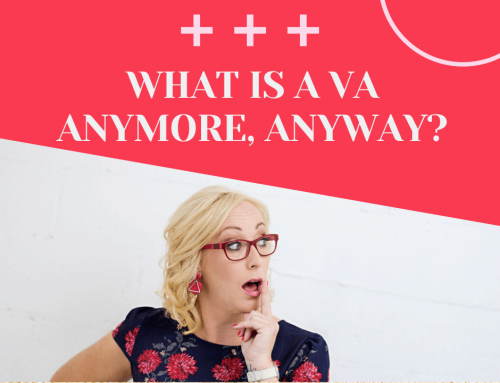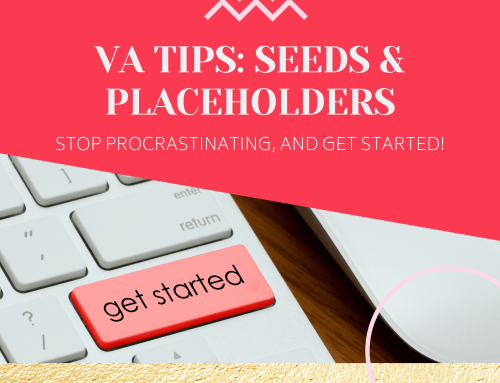 The truth of the matter is that any contractor assisting you with your unique business is going to need some orientation. Every business is unique and it would be mad to have someone just jump in and start working for you without educating them about your mission, goals, strategies, expectations and timeframes.
The truth of the matter is that any contractor assisting you with your unique business is going to need some orientation. Every business is unique and it would be mad to have someone just jump in and start working for you without educating them about your mission, goals, strategies, expectations and timeframes.
Virtual Assistants are an amazing resource for businesses, especially sole traders and home-based businesses, but there can often be some steps missed at the start of a VA-client relationship that destines you for disaster.
Some of the best VA to client relationships I have seen have started and been built from a very solid foundation. The business owner allocated a quality block of time to orientate the VA about their business practices. They had an information presentation that the VA followed on PowerPoint while the client spoke about each of the presentation’s points over the phone. The same could be done using skype.
Some clients need a VA because everything is out of control, so the thought of creating some sort of presentation just sends them into overwhelm. In fact, they feel that they don’t even have time to sit down with the VA (face to face or online) to really talk about their business, how things are done, and the why, what and when. But that is exactly the bit that will save you time and stress in the long run. You really DO need to invest in that time.
An experienced VA will know what questions to ask you to get the most from the conversation. But just to help you along, here are some of the questions that I would suggest you start with:
Let the VA know:
- How you came to be running your business
- What your main driver is for running the business
- What your product/service is/are
- What your business pain points are (what are you LSTs!) and why
- Who your ideal client is
- If you have worked with VAs before and how that went (consider that if you had a bad experience in the past, that perhaps the systems weren’t ideal or the personalities didn’t match. Look at what could have been done better (by both parties), and apply that this time)
- What your preferred method of communication is (some VAs for example, prefer clients who predominantly communicate via email – you want to make sure you both tick the same boxes when it comes to communication).
- When you are usually happy to be communicated (days, times etc)
- What projects you are working on and their timelines.
- Any processes or procedures that you currently use for the projects that the VA will be helping with (or projects that the VA could provide helpful advice about in regards to systemising or best practice)
- If you need to use any specific software to assist with the delivery of your service/products and can you help the VA (or get someone else who can) set these up and learn how to use them?
- What your expectations are of the VA – delivery, quality, response time, budget
I would also recommend that you ask the VA:
- How they came to be running their business
- What their main driver is for running the business
- What their product/service is/are
- Who their ideal client is
- When they are usually happy to be communicated (days, times etc)
- What can be expected in regards to delivery, quality, response time, budget
- Do you need to use any specific software to assist with the delivery of their service/products and can they help you (or get someone else who can) set these up and learn how to use them?
Ensuring that you are both on the same page will help avoid any assumptions or “black spots” in your understanding of the job at hand. It is very easy to assume that because the VA is excellent at e-newsletter development that they could just dive in and start creating newsletters for you. Yes, of course they could – but they won’t have the big picture in mind and be able to represent you accurately and identify golden opportunities, such as content for your ideal client.
Notes should definitely be taken when you first catch up and I highly encourage that you BOTH write up those notes to confirm your understanding of what each other has said. Send your notes to each other to confirm.
The VA can then finalise a document which outlines everything discussed. It should also include the tasks that have been agreed upon and their method of delivery. Saving this document in a mutual file, for example in Google docs or dropbox means that you can both reference it as needed.
And finally, just because you’ve had this session, it doesn’t mean that you can both just go “hell for leather” without ensuring you stay on the same page. Keep communicating. Ensure that questions can be asked again without fear of the “I already answered this!” response (unless you’ve answered it a number of times of course). We all need time to get to know each other and we all have a lot of information that others will be learning about us when we go into business projects together – be kind, listen, ask, and share.
Have you implemented strategies like the above? Did it work for you? I’d love your thoughts on this.





